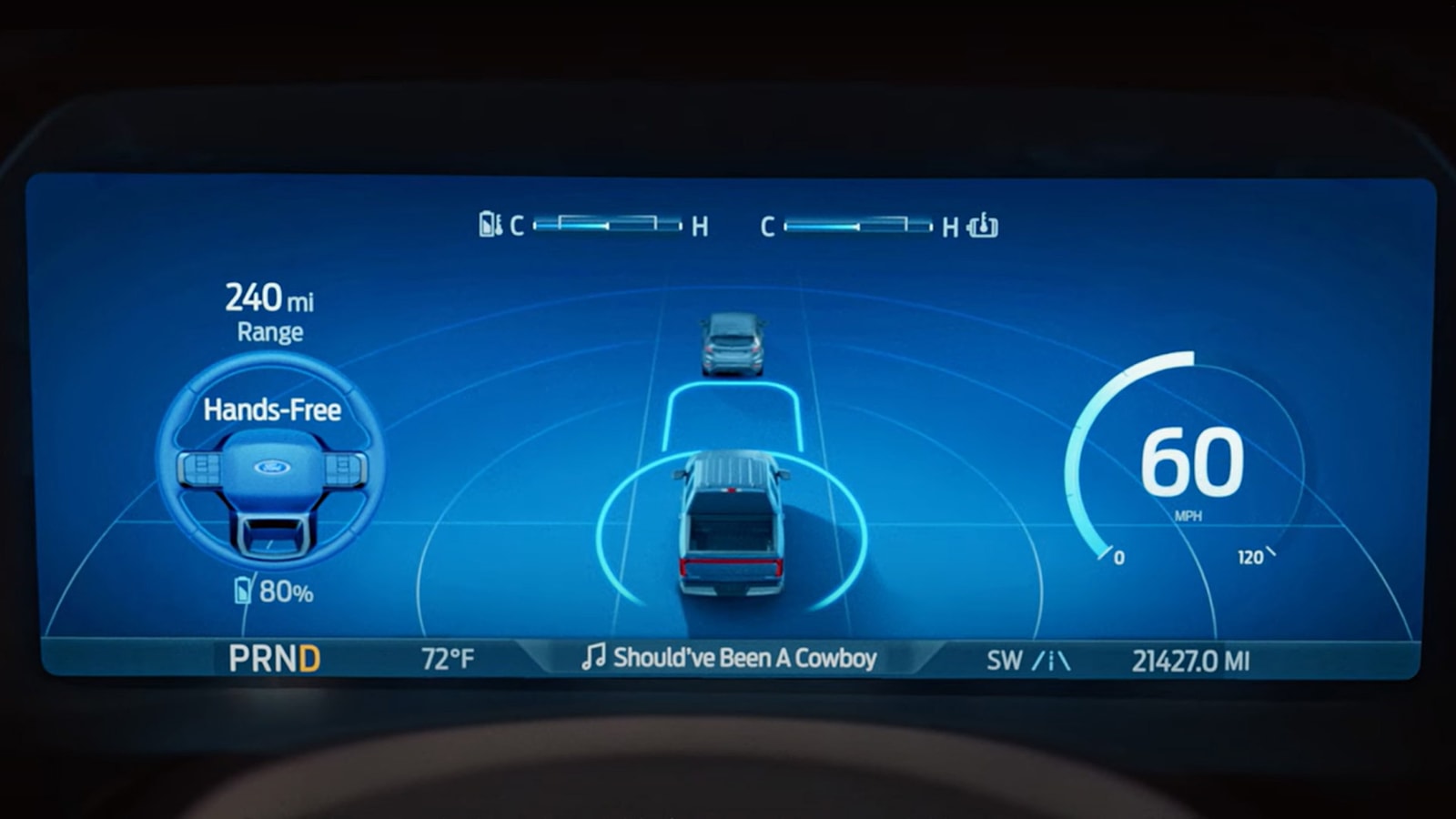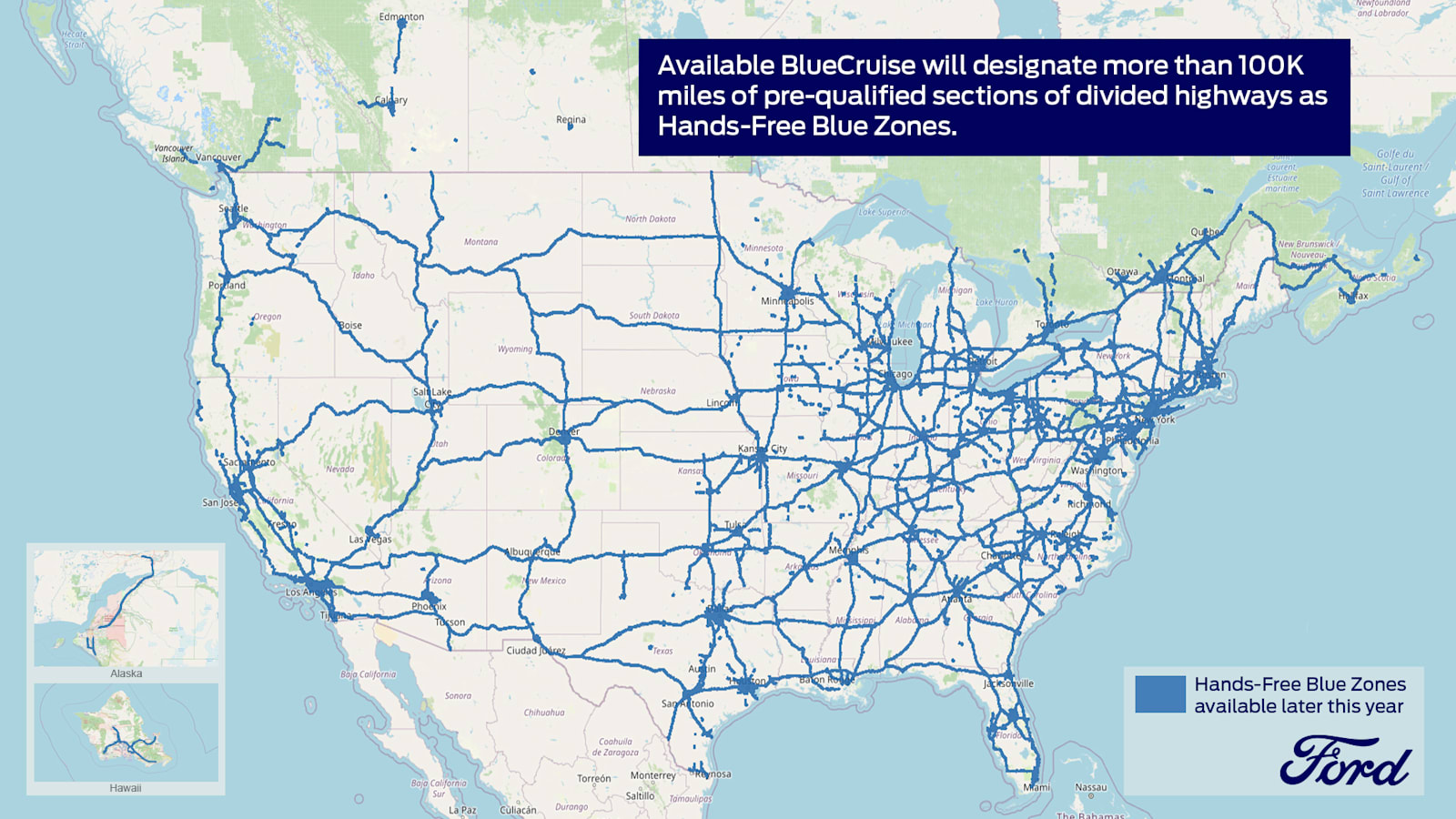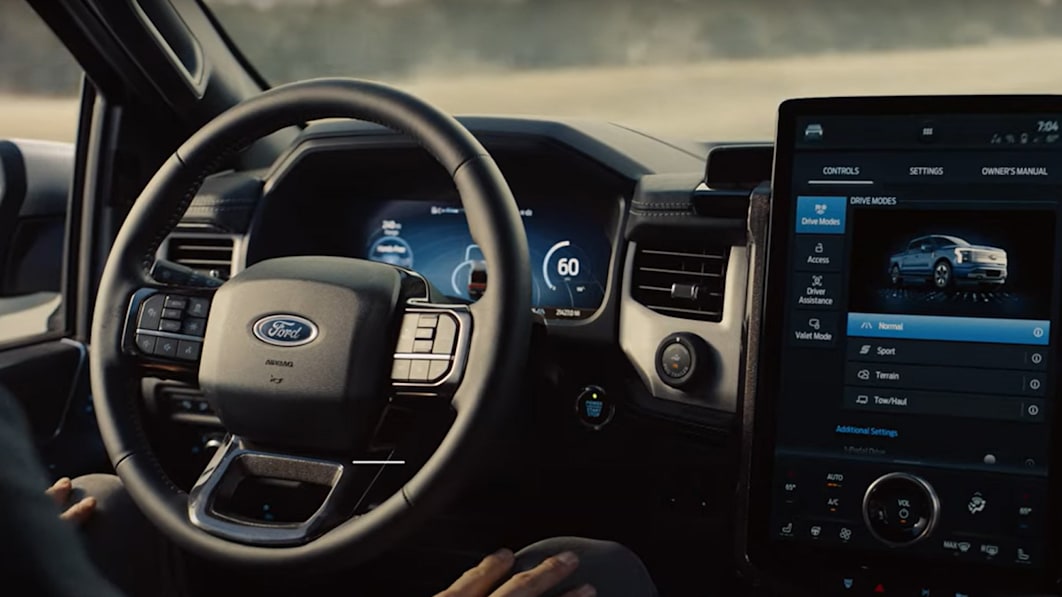SAN ANTONIO — During our first ride with the 2022 Ford F-150 Lightning, we had the opportunity to test the advanced BlueCruise driver assistance feature. Like GM’s Super Cruise, Ford BlueCruise allows you to take your hands off the wheel on certain, predetermined sections of restricted, divided highways.
So far, BlueCruise is only available on select models, namely the Ford Mustang Mach-E and 2022 F-150. (The Lincoln version, called ActiveGlide, is also available in the 2022 Navigator). Now the F-150 Lightning — the brand’s high-tech but otherwise well-known foray into the burgeoning electric pickup market — also offers BlueCruise. For this truck, BlueCruise comes standard in the premium Platinum trim and is also available as an option in the Lariat.
From a technical point of view, BlueCruise uses the vehicle’s GPS and navigation data to know where to activate it. It uses adaptive cruise control, lane centering and traffic sign recognition software – as well as the forward-facing camera and radar hardware that power them – to steer, accelerate and brake the vehicle, keep it in its lane and maintain a safe following distance behind any other vehicles in front of you. you. Inside the vehicle, cameras on the A-pillar on the driver’s side and just to the left of the infotainment screen on the dashboard monitor your gaze to make sure you’re aware of the road ahead and ready to take back control.

In practical terms, it works like this: first you need to activate the adaptive cruise control. When you’re on a predetermined, geofenced section of the highway where the system is allowed to activate (Ford calls these “Blue Zones,” of which there are 130,000 miles in North America to date), a message will appear on the left of the instrument panel lets you know that you can take your hands off the wheel.
BlueCruise worked well during our ride with the F-150 Lightning and kept us in our lane as we relaxed with our hands in our laps. The truck roamed gently across the wide lane for a bit, but kept a safe berth from the lane markings, and we didn’t notice we were intervening unless another car started to break into our lane. Just like when using hands-on adaptive cruise control, BlueCruise maintains speed and following distance.
However, unlike GM’s Super Cruise, there is no lighting system on the top of the steering wheel to clearly indicate the status of the system. It wasn’t always visually clear when it would be ready or if you should take it over, especially when our eyes were on the road some distance away, way above and beyond the instrument panel. There was a message on the dashboard and a faint beep. That can be especially surprising when the system fails and reverts to adaptive cruise control mode without a consistent reason why the required BlueCruise criteria were no longer met. We prefer Super Cruise’s more obvious cues as they help avoid confusion and allow us to take better advantage of the system when it’s ready.

There are, of course, some other limitations. There are the many roads where it’s just not allowed, for example, and we found it asking us to take over when we were near certain interchanges or exits. That problem will improve over time. Until now, BlueCruise has been unable to perform automatic lane changes as systems such as GM’s Super Cruise and Hyundai/Kia’s hands-on Highway Driving Assist II do. However, it can resume quickly after you manually change lanes. Finally, the system stops working at 82 miles per hour.
Like all automakers, Ford will continually improve its driver assistance technology over time, and we doubt it will be long before more Blue Zone miles are added and features such as automatic lane switching are implemented. Many vehicles today, including the Lightning, are capable of over-the-air updates, so you don’t need to buy the latest models to enjoy some of those future upgrades.
Related video:
